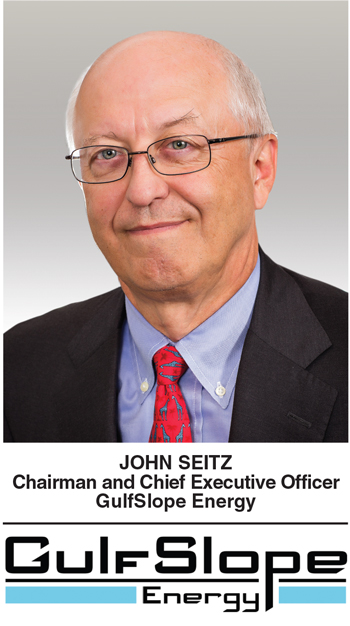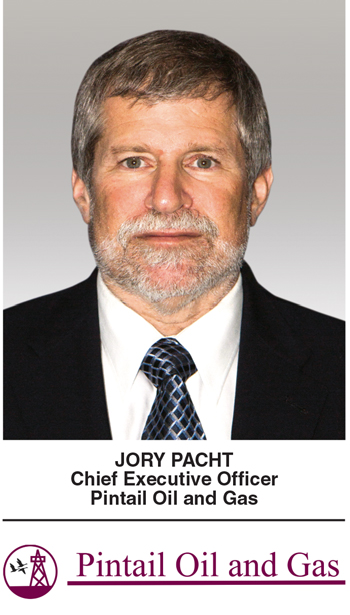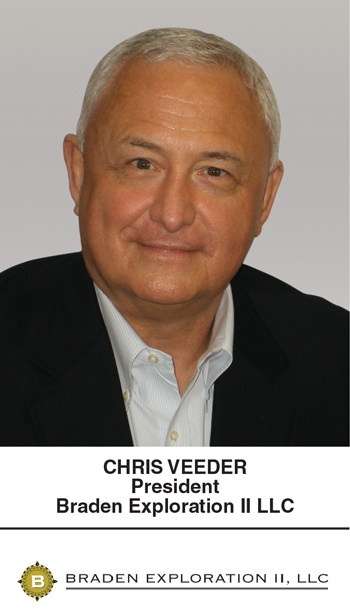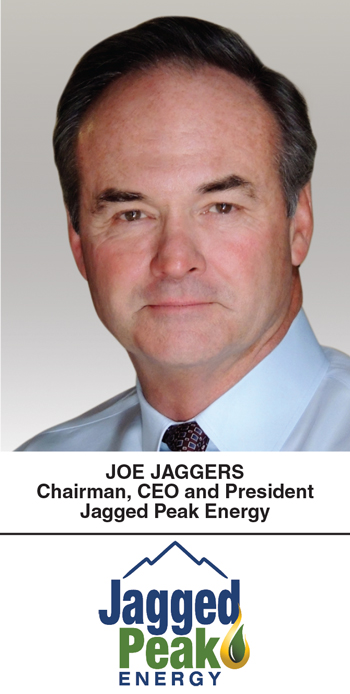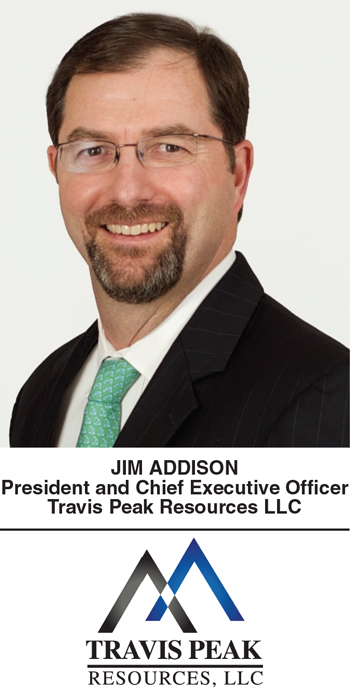
Producer/Operator Startups
Industry Entrepreneurs Leverage Proven Skill Sets To Discover Vast Opportunities
By Colter Cookson
“If you want to find oil and gas, go to the people who already have found it” seems to be the motto of the private equity companies and investors funding the latest generation of upstream startups. These startups’ strategies and areas of operation vary, but they all share one trait: the people behind them have a track record of creating value using the same philosophies and skills they plan to apply in their new ventures.
Gulf of Mexico explorer GulfSlope Energy Inc. is a case in point. During his 39-year career, Chairman and Chief Executive Officer John Seitz has helped make several discoveries in the Gulf of Mexico, the North Sea, Algeria, and Alaska, to name a few places, earning a “Legend in Wildcatting” title from the Houston Geological Society. The rest of GulfSlope’s team, which includes President and Chief Operating Officer Ron Bain, Vice President and Chief Financial Officer John Malanga, and Vice President of Corporate Development and Engineering Brady Rodgers, has a similarly impressive pedigree.
Like many startups, GulfSlope’s path to success is based on finding new ways to look at an old field. “We are using reverse time migration to go back to an area we explored at Anadarko Petroleum in the 1990s,” Seitz outlines.
That area is a region of the Shelf south of New Orleans where Anadarko, Hess and a few other companies discovered subsalt Miocene fields with a total reserve value of 420 million barrels of oil equivalent, Seitz says. “All of these fields produce either oil or rich condensate,” he notes.
GulfSlope, which is publicly traded, says its goal is to develop the Miocene on the Shelf. This formation is responsible for some of the biggest discoveries in deep water, but prior limitations in drilling and seismic technology have left it almost untested in GulfSlope’s area of interest, Seitz says. “Within 50 miles, we have billion barrel fields, so we get pretty excited when we think about that,” he comments.
GulfSlope licensed 2.2 million acres of seismic covering the area, reprocessed half of it, assembled a team of geoscientists with a history of making offshore discoveries in subsalt plays, and spent 14,000 man-hours combing through the data in search of the best opportunities, Seitz relates. Then it went to the Bureau of Ocean Energy Management’s March lease sale and won 21 of the 23 leases on which it bid.
“We have identified 17 prospects on the 21 leases we acquired with more than 2 billion barrels of prospective resources,” Seitz reports. “That is not only our number. Before we went to the lease sale, we hired DeGolyer & MagNaughton to perform an independent appraisal and assure us that our concepts and ideas were sound.
“We like this play so much because it is principally in shallow water,” Seitz continues. “The water depths range from 300 to 800 feet, and of course, that gives us the opportunity to drill low-cost wells. The cycle times are also fast, and infrastructure is abundant. In fact, it is hard to find one of our leases more than a few miles from a pipeline or a platform.”
Seitz estimates that each well will cost $40 million-$65 million, depending on depth. “We have considered adding staff to drill and operate the wells internally, but for now, it seems wiser to find partners,” he says. “With 17 prospects, our portfolio is too large for any one company to drill within the five-year lease term. By giving others a chance to drill the initial wells, we can get our exploration program started right away, leading to faster discoveries and production.”
Conventional Asset Optimizer
Pintail Oil and Gas, which is backed by a $50 million commitment from Ridgemont Equity Partners and based in Houston, is one of many startups that expresses plans to make solid returns by going against the grain. “As many exploration, drilling and production companies have moved to unconventional plays, they are generating capital by divesting some of their older conventional onshore Gulf Coast assets,” observes Jory Pacht, Pintail’s CEO. “That has created an opportunity for us to acquire Gulf Coast assets at what we believe are attractive values.”
With its long history of producing oil and gas, friendly regulatory environment and abundant infrastructure, the Gulf Coast is a great place to operate, Pacht says. He adds that the company’s management team has a long history of buying and revitalizing Gulf Coast assets, having founded, led or worked for outfits such as EnergyQuest I and II, Milagro Exploration, A.O.E. Operators, and Platinum Energy Resources.
At Pintail, the team hopes to apply its expertise to mature oil fields and midlife-to-mature gas fields, Pacht says. “We think of ourselves as the Extreme Home Makeover crew of the oil and gas business. We look for operational improvements that can create upside, such as right-sizing compression, optimizing artificial lift systems, or improving water management.
“Next, we look for behind-pipe and new drilling opportunities that were neglected because the previous owner had limited resources or access to bigger opportunities,” Pacht continues. “These might be zones that did not make sense to recomplete or drill when oil was $25-$30 a barrel, but make great sense now.”
Pintail also hopes to create value by aggregating assets, Pacht says. “When we started the company, we did a study and noticed that once a company’s value exceeds $200 million, other companies will pay more for its assets on a per barrel basis. So if we can aggregate $1 million-$50 million assets into a larger entity, when we decide to exit, we should be able to get more than we paid on a per barrel basis,” he explains.
CFO Jim Ivey points out that the company funds part of each acquisition using bank debt rather than private equity, then gradually pays the debt with the acquisition’s cash flow. “This is a powerful tool for enhancing our equity return,” he says.
Pacht adds that the company is happy to look at natural gas assets. “We are cautiously bullish on natural gas,” he says. “Storage rates are at record lows, power companies continue to switch from plants that can use gas or coal to more efficient, gas-only turbines, and fleets are starting to use gas as a vehicle fuel, so in the long term, we see the potential for price to go up. We would like to take advantage of the fact that current gas commodity prices are relatively low to pick up gas fields at what we believe will ultimately be considered a bargain.”
As of mid-September, Pintail had made one acquisition, the Keeran Ranch Field near the town of Inez in Victoria County, Tx. “In the six months we have owned it, we have increased production by a third through a combination of operational enhancements, recompletions and drilling new wells,” Ivey reports. “We also have acquired nearby acreage that we believe to be prospective.”
Discovered in the 1940s, the field has tremendous upside, Pacht says. “We have done studies that suggest oil is being produced from the wells on a 10-acre radius, but most of the wells are on 20-acre spacing, with some that are larger,” he says. “We have begun a 10-well program to fill in some of the gaps and reduce the spacing to 20 acres across the field. If we are right that the wells are only producing from 10 acres, we have many more to drill.”
Ivey adds that the field may have untapped horizons. “It never has been worked with modern seismic, so there may be deeper horizons that can give us tremendous upside,” he says.
Cline Shale Extender
The team behind Fort Worth-based Braden Exploration II LLC has had its share of success. According to company President Chris Veeder, its most recent venture, the original Braden Exploration, sold to EV Energy Partners in 2011, generating a 35 percent internal rate of return for investors. Much of the team also participated in Stroud Energy, a privately backed company sold to Range Resources for $450 million in 2006.
“We really enjoy the process of identifying properties, developing them, and eventually selling them, so it was easy to transition from Braden Exploration I to Braden Exploration II,” says Veeder.
The company has an $88 million commitment from Lime Rock Partners, the founders, and other institutional investors, he notes.
“We look at ourselves as a lease and drill company,” Veeder says. “Our expertise is recognizing areas that have not been fully developed, getting into those areas as a first mover, and applying our experiences from a technical and drilling standpoint to exploit the situation. We pride ourselves on keeping our costs down, and I think we have proven very strong in that area.”
Despite its skill and track record, the team knew that starting again would be tough, Veeder acknowledges. “There are a lot of smart people in our industry, so competition for the opportunities that are in the middle of a fairway is fierce. To get any traction, a new company has to throw everything on the table and come up with something no one else is looking at,” he suggests.
Braden Exploration II looked for opportunities in the Woodford Shale, the Mississippian Lime, and the Eagle Ford before it settled on the Cline Shale–known to some as the Wolfcamp D–in the Midland Basin of West Texas. To extend the play eastward, Veeder says the company has leased 8,300 acres in Sterling County.
“We knew from well control that the Cline was present throughout the area we selected,” he relates. “The logs we looked at suggested it had geologic characteristics like those in other counties where it is producing, but it is shallower, so our drilling and completion costs would be lower.”
The company drilled its first well in the fourth quarter of 2013. “It did not meet our expectations,” Veeder admits. “The Cline Shale has proven quite a challenge. Like shale plays across the United States, it will require some finesse in the areas of drilling and completion.”
Veeder predicts the company’s next completion will be more successful. “As a small company coming into an active play, we tend to follow the lead of bigger operators such as Laredo Petroleum, Apache Corp. and Devon Energy as to completion techniques,” he notes. “As these companies have pulled in experiences from other plays, our completion design has evolved toward shorter stages, shorter distances between clusters, and a different mix of proppant and sand.”
The results from operators who have tried such a formula have been encouraging, Veeder reports. “We believe we have turned the corner on our completion design and are excited about our future wells. We hope to drill the next one this year, then start a drilling program in 2015,” he says.
The company expects to drill 23 wells on its existing acreage in 2015 and 2016, Veeder says. Assuming the wells prove as successful as the company hopes, he indicates it can drill 17 more on its acreage.
“8,300 acres and 40 locations is a decent position, but we are looking for something larger than that in our business model,” Veeder says. “A number of wells in the area have been unsuccessful, so some early entrants with large acreage positions are going to let them expire, creating opportunities for us to pick up acreage and have excellent running room.”
Delaware Basin Driller
After selling Uintah Basin-focused Ute Energy for $1 billion, Joe Jaggers says the team members behind the company knew they wanted to launch another startup. In April 2013, they formed Jagged Peak Energy with a $400 million commitment from Quantum Energy Partners, the same firm that backed Ute. The company is headquartered in Denver.
“We set out with a strategy of getting a meaningful position in one of the big three oil basins–the Eagle Ford, the Permian, or the Bakken–where we could apply what we think are core competencies around execution and completions,” says Jaggers, the company’s chairman, CEO and president.
According to Jaggers, after evaluating several opportunities, Jagged Peak decided to focus on the Permian Basin. Because of steep competition for acreage, the company had trouble acquiring a position in the Midland Basin, so it turned its attention to the Delaware Basin.
“There is very similar geology at the Wolfcamp levels from one basin to the other,” Jaggers reports. “Above that, the Delaware Basin has the Bone Spring, which is similar to the Spraberry, as well as the Delaware sands. So the basin offers a stacked pay situation comparable to what is on the Midland side.”
Since the Delaware Basin play is less mature, Jaggers and his team predicted the company could build a position at a more attractive price. “That has proven to be the case,” he reports. “Through three major acquisitions, we have reached 62,000 net acres.”
Jaggers says most of this acreage is in Ward County, Tx., but some of it spills into Texas’ Pecos and Reeves counties. “Our acreage is where the three counties come together, along the Pecos River,” he notes.
The company now is shifting its attention to development, Jaggers says. “We are running one rig and plan to add a second in October and a third by the end of the year,” he said in late September. “We are producing 2,400 boe/d, and more than 1,800 of that is oil.”
Much of the production is coming from Jagged Peak’s second well drilled. “The well is our first with a long lateral, which we think is going to be a key enabler of economic wells in the play,” Jaggers describes. “It has been on line for 20 days, and for the past seven days it has averaged 1,400 boe. It is only at 10 percent load recovery, so it is still in its early days.”
The company’s first well used a 4,000-foot lateral instead of one that was more than 9,000 feet. In late September, Jaggers said that after three months on production, it was averaging 258 bbl/d and 748 Mcf/d. “It still is flowing, so we have not put it on artificial lift yet. We will see how it does long term,” he remarks.
Jaggers reports that Jagged Peak and other operators in the area are sharing drilling and completion data with each other. “The land grab is over, so we will share whatever we learn, because if we can figure out the best way to develop the play, everyone benefits,” he says.
Because other operators had success in the Wolfcamp A, Jagged Peak’s first two wells targeted that interval, Jaggers relates. “To get to the point where we can sell the acreage, we need to get up to four rigs. We want to spread out and try some of the different levels, or at least see offset operators try different levels, so we can give potential buyers confidence this a stacked development play,” he says.
Jaggers remarks he looks forward to testing the Wolfcamp B. “We have not done a horizontal targeting it, but we have drilled a pilot hole into it and saw tremendous pressure and lots of oil shows,” he comments.
Private Nonoperator
Houston-based Carrier Energy Partners is a nonoperator backed by private equity firm Riverstone Holdings. Vice President and Chief Financial Officer Christina Chen says the nonoperator model is unusual for a private firm, but fills a much-needed niche. “Unconventional plays are capital intensive, and with drilling and completion costs often ranging from $8 million to $10 million a well, an operator’s capital does not go as far as it once did,” she posits.
In addition to paying more for each well, Chen says today’s build-and-sell operators must fund larger drilling programs. “Several years ago, startups could aggregate acreage, drill a few wells, and exit,” she recalls. “Today, the industry has a better understanding of how much resource plays vary based on acreage location, so a higher percentage of an operator’s overall inventory has to be drilled before a successful exit.”
The two-pronged increase in capital requirements is where Carrier comes in. “We hope to be one potential solution to help operators’ capital go further,” Chen says. “We will partner with an operator at an asset working interest level, put money in the ground, and help execute a development program to derisk the asset quickly.”
The company is a great partner because the people behind it know how to work with operators, Chen says. Before forming Carrier Energy Partners, she and Mark Clemans, Carrier’s president and chief executive officer, built a portfolio of primarily nonoperated assets for a Fortune 200 company that produced 4,000 net boe/d.
“We have closed a number of deals. We have partnered with large independents and smaller private companies, so we have experience with what operators value and know how to respond in a timely manner, whether that means reviewing documents or funding capital,” Chen assures.
She points out that Carrier’s team includes two engineers. The first is Clemans, who has 25 years’ experience in upstream evaluations, operations and investment, with prior experience at Exxon, Netherland Sewell & Associates Inc., and Goldman Sachs. The second is Engineering Manager Aaron Shimek, who previously served as senior reservoir engineer for Quantum Resources Management and has stints in the Mid-Continent, the Rocky Mountains, the Gulf Coast and the Gulf of Mexico.
“We are not looking to merely write and cash checks,” Chen says. “Instead, we view teaming with an operator as a collaboration. We bring our technical, financial, and transactional experience, thoughts and opinions to the table and hope that helps both of us get to the end goal better and more quickly.”
Needless to say, the company wants to invest in high-return assets. “We are flexible in what we will evaluate,” Chen says. “We have looked at conventional and unconventional opportunities throughout the lower-48, including the Permian Basin, the Bakken, the Marcellus, the Powder River Basin, and the Gulf of Mexico.”
Carrier also looks for a best-in-class operator, Chen adds. “We like to partner with operators who have a solid track record of generating returns for their investors and experience in the type of plays they are looking to exploit,” she says.
But a great track record is not enough, she continues. “It is important for us to find an operating partner who is aligned with our return objectives, investment horizon, and exit strategy,” Chen emphasizes. “That may mean working with other private equity-backed companies that have similar incentives as we do.”
Ideally, Chen says Carrier seeks to split its $300 million equity commitment among two-four strategically-aligned operators who are active in different plays. Because it needs to generate private equity-quality returns, the company is willing to invest in projects that involve some risk, she adds.
As a drilling project, the company’s first investment is a case in point. Through a joint venture agreement with a private operator, Carrier has a 49 percent working interest in 15,000 acres in the Texas counties of Culberson, Reeves and Pecos. The operator is targeting Wolfcamp intervals in the Delaware Basin.
“The first well spudded in early September,” Chen reports. “We have seen great results in the Delaware Basin, so we are excited about the well and the ones that will follow.”
Fast Follower
Jim Addison, the former general manager of the Rocky Mountain and Mid-Continent regions for Newfield Exploration, says he launched Travis Peak Resources LLC for a change of pace. “In the last quarter of my career, I wanted to build something from the ground up and create an organization that incorporated all the best practices and experiences from my professional and personal experience,” he comments.
Because he always has enjoyed working with a small, multidisciplinary team on an extremely focused project, Addison says starting a private company seemed the best way to achieve that goal.
“Our team members have the same technical, commercial and operational capabilities as some of the larger companies from which we came,” he says. “We need those skill sets to execute our business plan.
“We will not be trying to discover the next unconventional resource play, but will be a fast follower. We have extensive experience across numerous resource plays in the United States. That experience will allow us to identify opportunities based on relatively little information, and enter into plays earlier than others,” Addison clarifies.
The company also has the capability to acquire and exploit assets or lease acreage in the parts of proven plays that have not lived up to expectations. “We will go into these plays when we have an idea we believe will lead to better results,” he says. “For example, we may drill and complete a well differently or go after a horizon outside the known field pay.”
Evaluating plays based on limited data takes a technical team with experience in several basins, Addison suggests. “To do it well, we need to look at how industry best practices and results have changed over time in more mature plays with similar rocks, then ask if we can make the same sort of improvements in the emerging play. If those improvements make sense from both geologic and technical standpoints, we have a road map of how the play will improve.”
Even with the most careful evaluation, this strategy can be risky, Addison acknowledges. “Because some of our ideas will not work as well as we predict, we plan to invest in several areas. If we build a portfolio with the right kind of opportunities, then collectively, it will turn out well,” he reasons.
When Travis Peak started, the team planned to look at the Permian Basin, the Mid-Continent, South Texas and the Gulf Coast, and Appalachia. “We worked through the first couple and did not find any opportunities that were scalable and large enough to fit our business model, so in mid-May, we shifted all our resources to the Appalachian Basin,” Addison relates. “We are starting to put together acreage in Pennsylvania for our first project.”
The region has limited appeal for many operators, Addison observes. “Basis differentials to NYMEX prices are quite large, especially in certain areas, so at first glance, people may ask why we want to be there,” he says. “After careful study, we believe many of the planned infrastructure projects will get built and the Appalachian Basin will become a net exporter of gas, so the basis differentials should improve.”
The Marcellus and Utica have some of the best finding and development costs in the United States, Addison notes. “The negative cloud surrounding the play because of the basis differentials has created a unique opportunity to pursue and capture great assets at a low cost,” he says.
Travis Peak is open to leasing acreage or buying assets outside Appalachia, Addison reports. “The key for us is a positive view on the amount, quality and economics of undeveloped drilling opportunities,” he says.
“We are creating an organization with the skill set, mind-set and values that we believe will enable us to be successful and sustainable, such that we can look forward to Travis Peak II, III, IV, and V,” Addison remarks. “I will not be around for all of those, but if they choose, the thirty-somethings on our team will have the opportunity to keep the company rolling and work together for a number of years.”
For other great articles about exploration, drilling, completions and production, subscribe to The American Oil & Gas Reporter and bookmark www.aogr.com.














